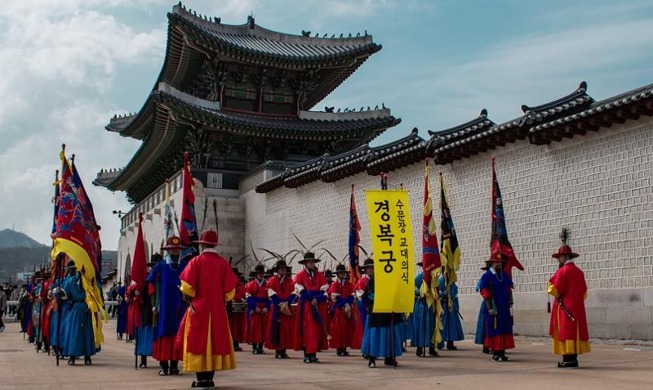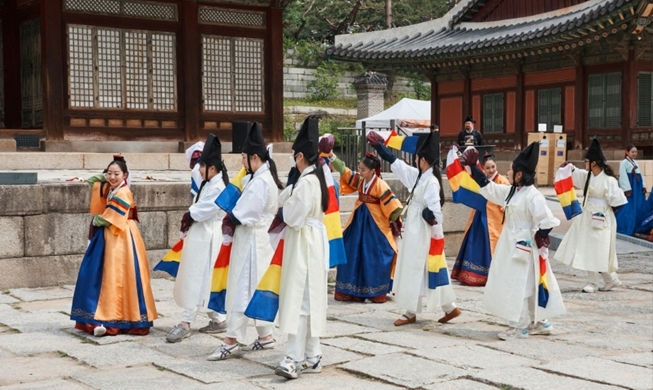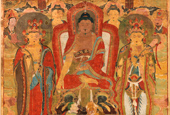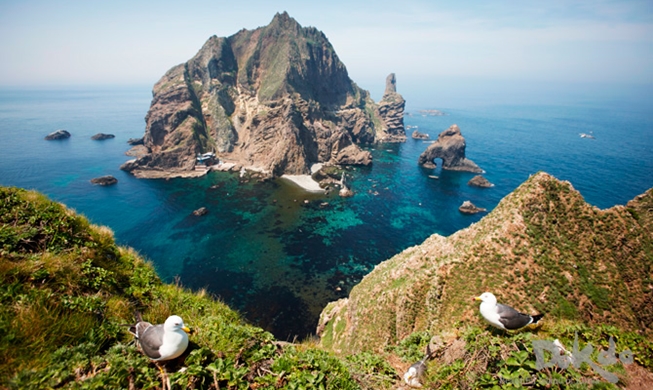-
 Korea.net's 24-hour YouTube channel
Korea.net's 24-hour YouTube channel- NEWS FOCUS
- ABOUT KOREA
- EVENTS
- RESOURCES
- GOVERNMENT
- ABOUT US
A special exhibition featuring a collection of travel literature and travel paintings is being held at the Cheongju National Museum in Cheongju, Chungcheongbuk-do (North Chungcheong Province), and it has been garnering positive reviews from art fans across the country. On display are some 75 pieces inspired by the beauty of the landscape of North Chungcheong Province produced between the 13th century, during the Goryeo Dynasty (918-1392), and the 19th century, during the Joseon Dynasty (1392-1910).
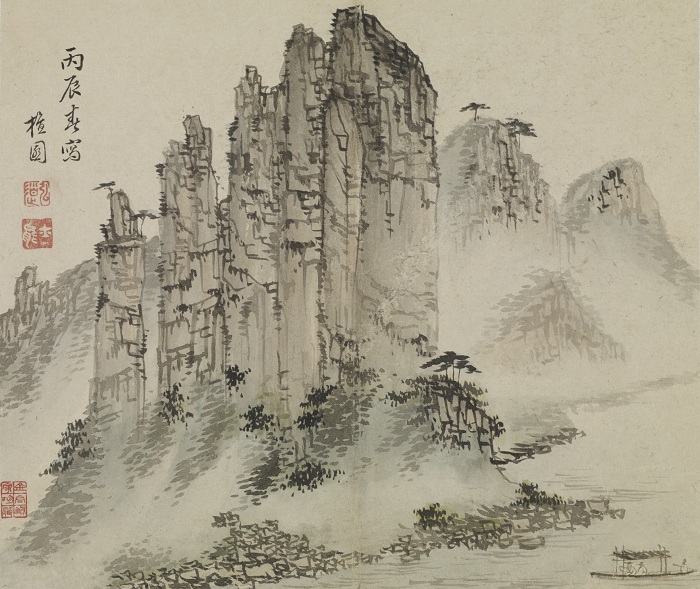
Oksunbong Peak is painted by Kim Hong-do. It is one of the most visited travel destinations in the area, located in Jecheon, North Chungcheong Province. (photo courtesy of the Chungju National Museum)
There are four regions of North Chungcheong Province that are surrounded by rich green forest, eye-catching rock formations and clean water. The areas of Jecheon, Cheongpung, Danyang and Yeongchun have become the background for a great many pieces of travel literature and for many landscape paintings.
Making the most of the geographic merits, artists from the period enjoyed rowing across the river to appreciate the landscape and the rock formations of Oksunbong Peak, Gudambong Peak, Dodamsambong Peaks and of the Seokmun rock formation. In the face of nature, they transferred their impressions and inspirations onto blank canvas.
The special exhibition offers a chance for visitors to peek into the travel experiences of Goryeo and Joseon times. The first section of the exhibition features literature works focused on the landscape of North Chungcheong Province. Two of the more popular sites are Oksunbong Peak, regarded as one of the best landscape views around Danyang, and the Hanbyeongnu Pavilion in Cheongpung. The pavilion is situated inside a government office, under which the Namhangang River flows. On the opposite bank stands the Geumbyeongsan Mountains. The beauty is well pictured in many classic works of literature. First, there is "The Poetry of the Hanbyeongnu Pavilion" penned by Juyeol (?-1287) during Goryeo times in the 13th century. Second, on display are some writings about several landscapes in Danyang recommended by the region's then governor, scholar Yi Whang (1501-1570), who compiled the collection in the 16th century and went by the pen name of Toegye. Third, in the 19th century, "The Poetry of Oksunbong Peak" by Kim Jeong-hui (1786-1856), who went by the pen name Chusa, among other names, expresses the beauty of the land and, finally, there are records about the Hanbyeongnu Pavilion written by Cheongpung's vice governor, Yun Je-hong (1764-sometime after 1840), who went by the pen name Haksan.
The second section of the exhibit sheds lights on landscape paintings produced between the 18th and 19th century in the late Joseon Dynasty. It displays works by Joseon's iconic landscape painters, such as Jeong Seon (1676-1759), who went by the name of Gyeomjae, Choi Buk (1712-1786), Kim Hong-do (1745-1806), who went by the name of Danwon, and, again, by Yun Je-hong/ Haksan. Some of the more spectacular works on display include "Haseonamdo," "Samdodamdo," a landscape painting of the Dodamsambong Peaks and "Bongseojeongdo," a portrait of old Danyang county, all drawn by Jeong Seon (1676-1759), who went by the pen name of Gyeomjae. True to his reputation, the paintings reflect his masterful drawing ability and a technique that captures the characteristics of each scene.
Two other works are "Oksunbongdo" and "Sainamdo," both painted at the age of 52 by Kim Hong-do (1745-either 1806 or 1814), who also went by the name of Danwon. Both give an insight into his elegant stroke technique and his effort at creating a fresh style.
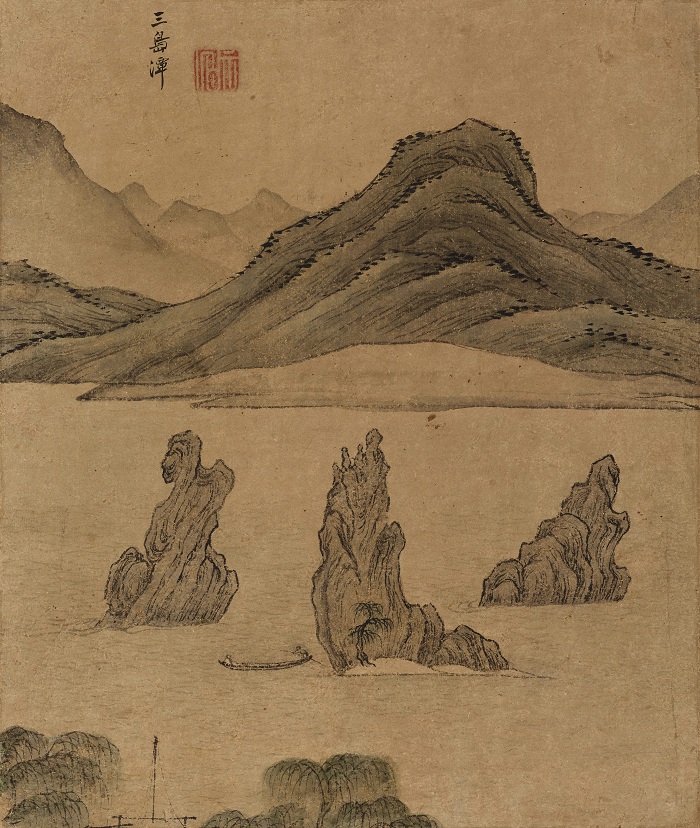
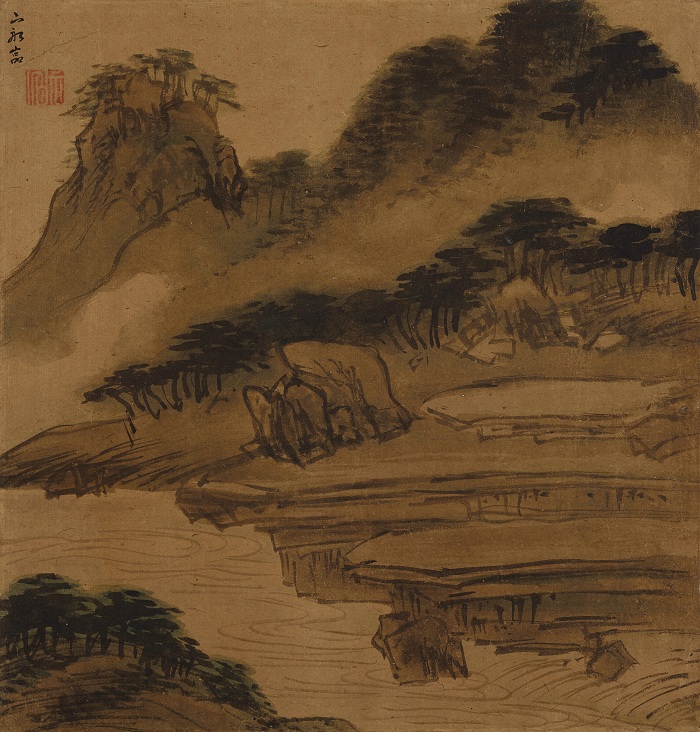
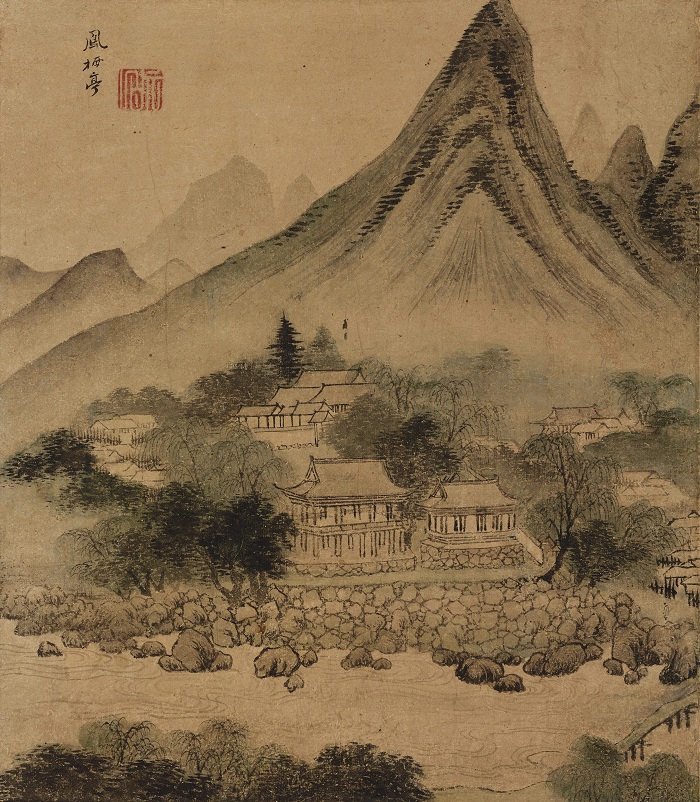
(From the top) Jeong Seon's "Dodamsambongdo," "Haseonamdo" and "Bongseojeongdo." Both the Dodamsambong Peaks and the Haseonam Peaks are located in Danyang. The Bongseojeong was a government office in Danyang during Joseon times. (photos coutesy of the Cheongju National Museum)
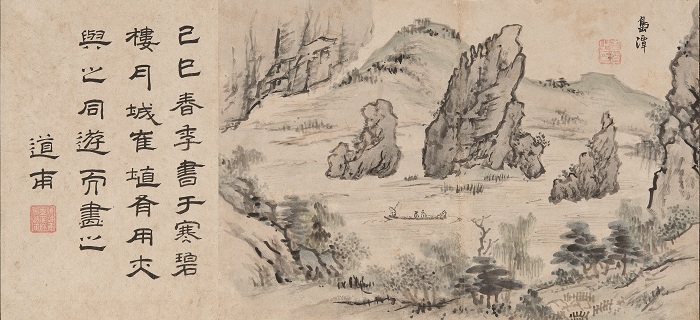
Painter Choi Buk's "Danguseongyudo." The scene of the rowers on the river was painted by Choi and the script on the left was added by Lee Gwang-sa (1705-1777), or Wongyo, the greatest calligrapher of the time. (photo courtesy of the Cheongju National Museum)
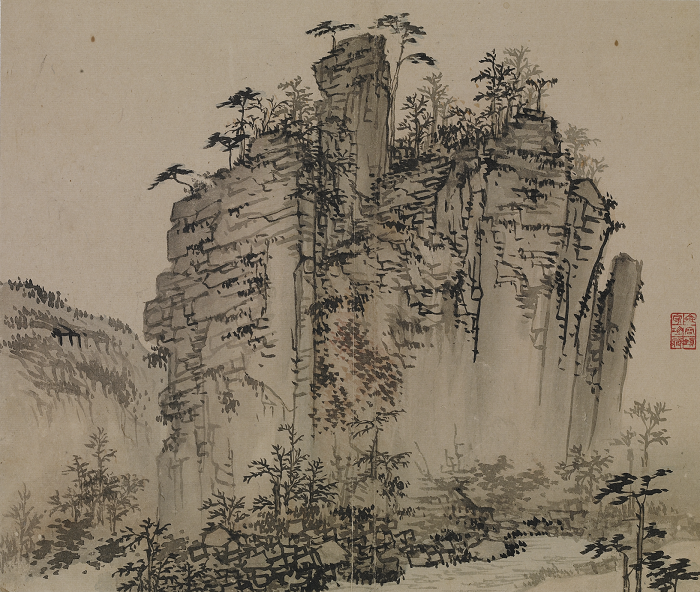
Kim Hong-do's "Sainamdo" is known for its magnificent view of the precipitous cliffs at the Sainam Rocks, one of the most picturesque places in Danyang, North Chungcheong Province. (photo courtesy of the Cheongju National Museum)
The third section of the exhibition showcases views of modern artists. It has on display similar scenes from a different perspective, from different angles or made with different materials. It offers a fun opportunity to compare the works from Joseon times with those of today.
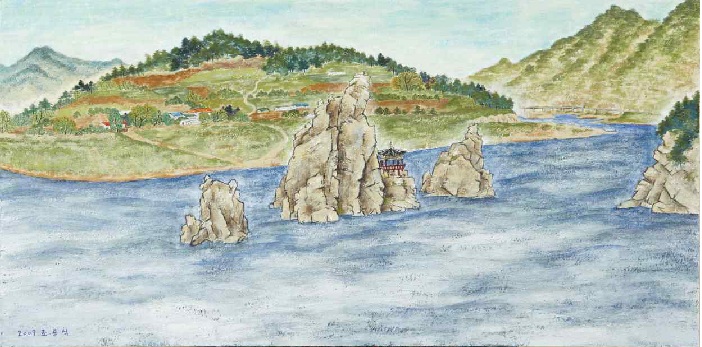
Present day painter Jo Yong-sik's "Dodamsambong Peaks" (2000). The biggest difference between works from Joseon times and those of today is the elaborate and detailed background. (photo courtesy of the Cheongju National Museum)
Curator Lee Su-kyeong from the museum said that, "This exhibition was designed to reveal aspects of human nature that want to enjoy the beauty of nature and express its feelings in the form of art."
"It's a cultural trend, these days, to take photographs of beautiful landscapes using your smartphone and to share them instantly online. This can be seen as an extension of the production of travel literature and landscape paintings from the past."
The special exhibition on travel literature and landscape paintings continues until June 22.
More information can be found at the Cheongju National Museum's website.
http://cheongju.museum.go.kr/v2011
(All materials courtesy of Cheongju National Museum)
By Lee Seung-ah
Korea.net Staff Writer
slee27@korea.kr




